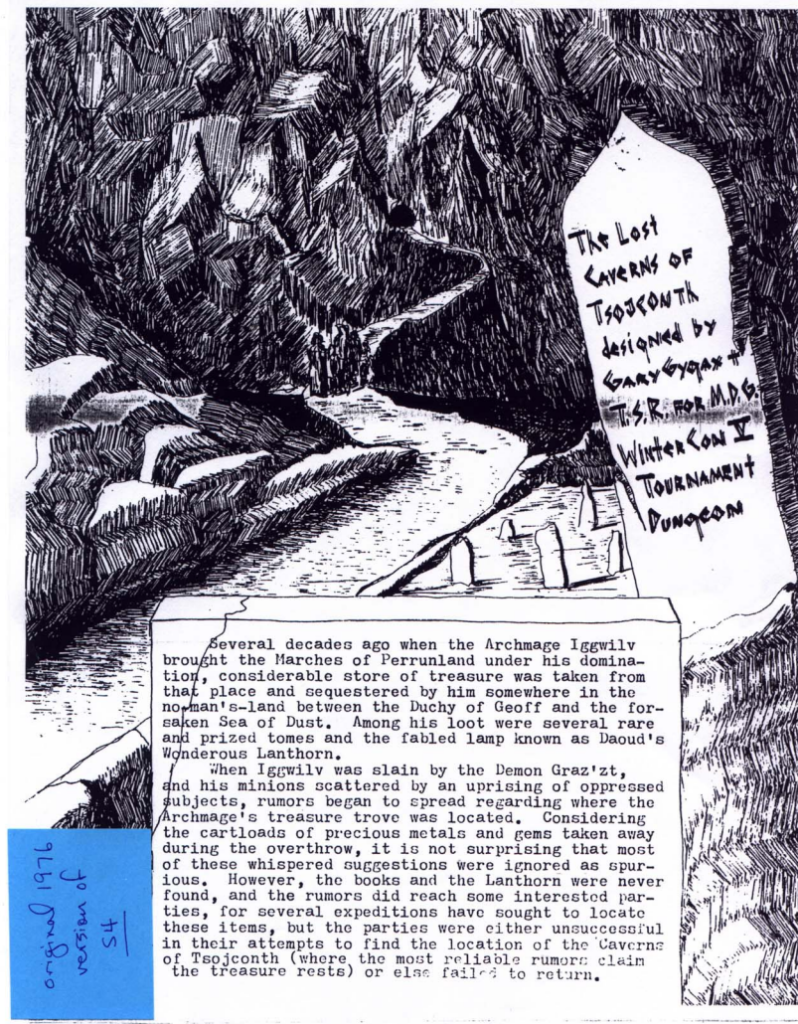In my A Game Per Year project, my goal has been to read one roleplaying game corebook for every year they’ve been published. However, I soon started to feel that it was hard to decipher how the games were really meant to be played. For this reason, I decided to start a parallel project, An Adventure Per Year, to read one roleplaying adventure for each year they’ve been published.

Among the very first roleplaying adventures ever published, The Lost Caverns of Tsojconth was created by Gary Gygax as a D&D tournament dungeon for WinterCon V. It’s closely tied to the specific circumstances in which it was meant to be run, a convention where multiple Dungeon Masters would run their own games in parallel and the best performing players could win.
The scenario is structured into two dungeon levels. The idea is that the more successful players will go from level one to level two, which acts as the second round of the competition before the final winner is determined.
The characters are a group of adventurers seeking the treasure of an Archmage, which includes something intriguingly called Daoud’s Wondrous Lanthorn. The adventure consists of maps which looks like they were drawn by hand on graph paper and short room descriptions telling you what monsters, traps and treasures can be found in each.
There are some baffling details. Two of the pre-created player characters have intelligent talking swords, like comedy versions of Elric’s sword Stormbringer. They bicker and demand gems to adorn their scabbards. There are “Chinese Hill Giants”, little more than throwaway racist stereotypes. A group of Fire Giants is willing to reveal the location of treasure to save their own lives, suggesting the possibility of social interaction with NPCs.
The guidelines concerning running the adventure are mostly about making each instance of play as identical to every other as possible. This way, the competition is fair. The way to do this is to eliminate wandering monsters and keeping all damage rolls to the averages given by the system instead of actually rolling dice.
Like many early roleplaying game releases, The Lost Caverns of Tsojconth feels like it’s in dialogue with a scene, a tradition and a community that I only superficially understand.